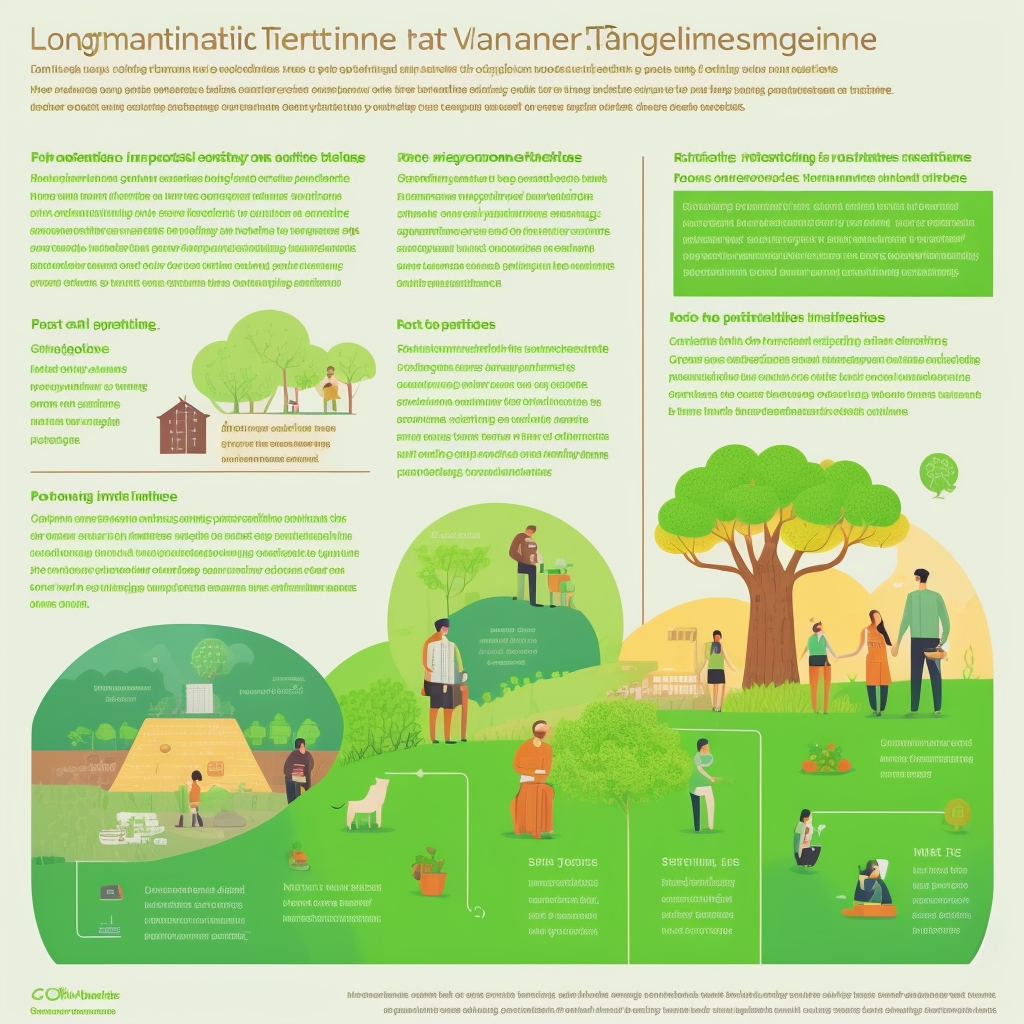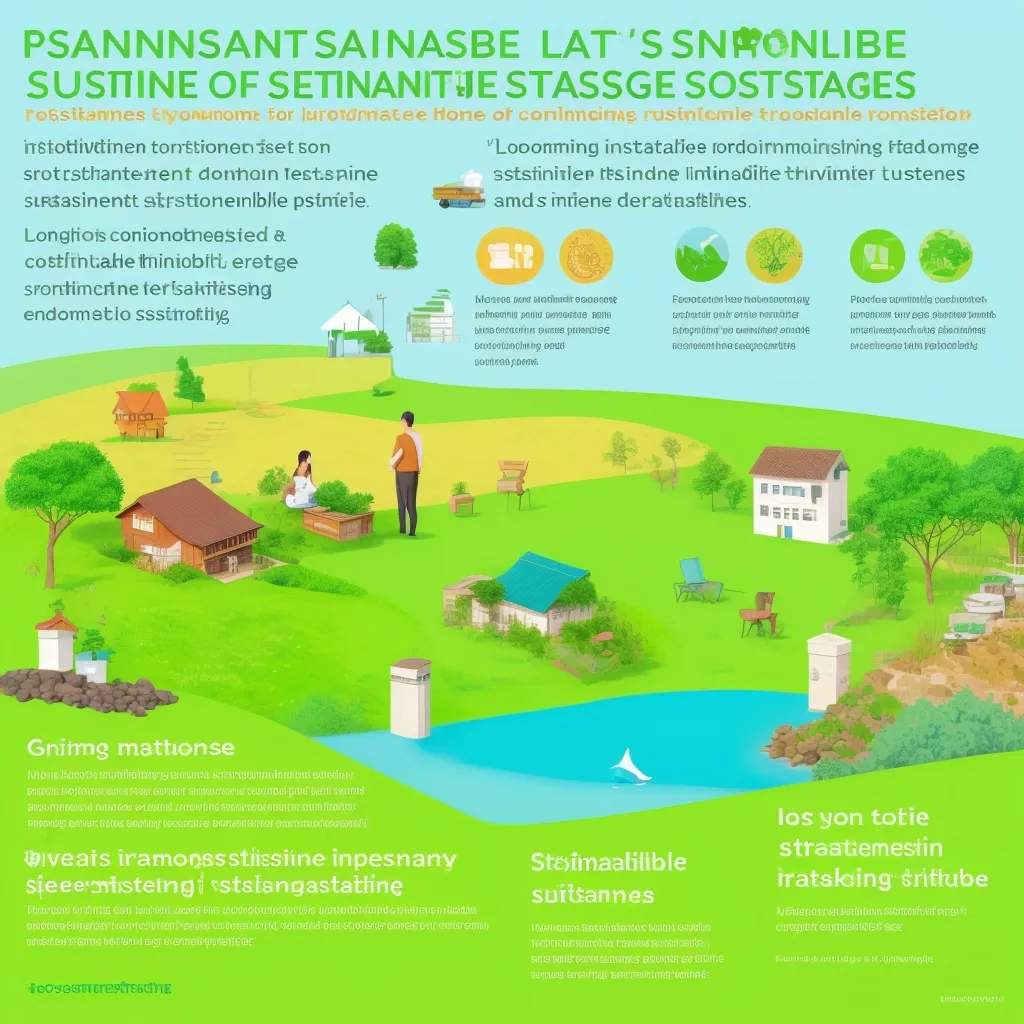You know, just last year, I found myself knee-deep in a situation that felt both exciting and terrifying. It was a sunny Wednesday afternoon in June when I got a call from my college buddy, Dave. He was buzzing with excitement about this “can’t-miss” passive income venture. I remember thinking, “Here we go again,” but as he talked, I realized this wasn’t just another pie-in-the-sky idea. It had potential—a lot of it.
Dave had stumbled upon a burgeoning market for eco-friendly home products, and he was on fire about launching a line of reusable household items. What’s particularly fascinating is that this market isn’t just a niche anymore; the global sustainable home goods market was valued at a whopping USD 400 billion in 2024 and is projected to expand at a compound annual growth rate (CAGR) of 10%, reaching USD 800 billion by 2032. That’s a significant wave to catch! The momentum behind this growth is driven by increasing consumer awareness about environmental impact, government regulations favoring sustainable products, and the millennial and Gen Z demographics who prioritize eco-conscious purchasing decisions.
But—and here’s the kicker—he wanted to partner up. Now, normally, I’d be all for it. I’ve always believed in the power of collaboration, especially after witnessing how successful partnerships like Ben & Jerry’s or even tech giants like Google (originally founded by two Stanford PhD students) have transformed industries. But I couldn’t shake the feeling that I needed to tread carefully. The stakes were high, and I was still licking my wounds from a previous venture that went sideways due to poor partnership dynamics. That earlier experience taught me that even the most promising business ideas can crumble when partners aren’t aligned on fundamental issues like decision-making authority, profit distribution, and long-term vision.
We set up a meeting to hash out the details. Sitting across from Dave in that little coffee shop, surrounded by the hum of espresso machines and chatter, I laid my cards on the table. “Dave, I’m intrigued, but we need to be smart about this. Let’s talk structure, responsibilities, and, most importantly, exit strategies.” The atmosphere was charged with possibility, but I knew from experience that successful partnerships require the same level of planning and documentation as any other critical business decision.
See, one crucial lesson I’ve learned in passive income ventures is the importance of planning for the end from the beginning. It’s not just about the dream of making money while you sleep, but also about ensuring that if things go south, you can part ways amicably. It’s a topic often overlooked, with statistics showing that nearly half of business owners looking to sell their company have no formal exit strategy. Yet, having one is essential to protect both relationships and investments. Think of it like a prenuptial agreement for business—it might feel uncomfortable to discuss, but it’s infinitely better to have these conversations when everyone’s optimistic and rational rather than during a crisis.
We got into the nitty-gritty, discussing how we’d split profits and manage the day-to-day operations. Dave and I agreed on setting clear roles—he’d handle product development and supply chain logistics, while I’d focus on marketing and finance. This division of labor made sense given our respective strengths and educational backgrounds, and it genuinely helped mitigate the risk of stepping on each other’s toes, which, frustratingly, is a common pitfall in partnerships. We also established specific metrics for success, regular review meetings, and clear protocols for major decision-making. I insisted on documenting everything in a formal partnership agreement, complete with clauses covering intellectual property rights, capital contributions, and dispute resolution mechanisms.
Everything seemed to be falling into place until we hit the “messy middle.” About six months into the venture, we started facing unexpected challenges that tested every aspect of our partnership structure. Our supplier in Southeast Asia was hit by a regulatory clampdown that threatened to derail our entire operation. The new environmental regulations, while ultimately beneficial for the industry, created immediate compliance hurdles that smaller suppliers couldn’t navigate quickly. Suddenly, the dream of passive income felt more like a nightmare. This unexpected disruption really highlighted a key challenge many small businesses face in 2024: economic instability and supply chain issues that have become increasingly common in our interconnected global economy.
In those frantic weeks, I found myself questioning everything. Was partnering a mistake? Did we bite off more than we could chew? Should we have started with domestic suppliers despite the higher costs? But in that chaos, something remarkable happened—Dave and I pulled together in ways that surprised both of us. We brainstormed alternatives, explored new suppliers across different continents, and tightened our operational processes while maintaining our quality standards. It was tough, and there were moments of doubt where we both considered cutting our losses, but it was also invigorating to see our partnership grow stronger under pressure. We didn’t just survive; we adapted, which is precisely what experts say is crucial for navigating economic ups and downs in today’s volatile business environment.
During this challenging period, we discovered the true value of our complementary skill sets. Dave’s technical knowledge of product specifications helped us quickly evaluate new suppliers, while my financial background enabled us to restructure our cash flow projections and secure bridge financing. We also learned to leverage technology more effectively, using supply chain management software and establishing relationships with multiple suppliers to create redundancy in our operations.
Fast forward to today, and I’m thrilled to say the venture is thriving beyond our initial projections. We’ve expanded our product line to include innovative items like biodegradable cleaning supplies, bamboo kitchen utensils, and even smart home devices designed for energy efficiency. We’ve reached markets we hadn’t initially considered, including corporate clients looking to green their office spaces and subscription box services focused on sustainable living. And the passive income? It’s real and growing steadily. Our automated systems now handle most routine operations, allowing us to focus on strategic growth while the business generates consistent revenue streams.
But more than the financial rewards, it’s the lessons learned that stick with me and continue to influence how I approach business partnerships. The experience taught me that successful partnerships aren’t just about finding someone with complementary skills—they’re about finding someone who shares your values, work ethic, and commitment to weathering inevitable storms together.
For anyone considering a partnership for passive income, here’s my comprehensive take: it’s beneficial when both parties bring complementary skills, when there’s complete transparency about goals and risks, and when you’re prepared to adapt to unforeseen challenges with creativity and resilience. It’s not always smooth sailing, and there will be moments when you question every decision, but when it works, it’s incredibly rewarding both financially and personally. The key is treating your partnership like any other critical business asset—it requires ongoing maintenance, clear communication, and mutual respect to flourish.
Frequently Asked Questions
How do you decide if a partner is the right fit for a passive income venture?
Choosing the right partner involves assessing complementary skills and shared values, but it goes much deeper than surface-level compatibility. It’s crucial to ensure both parties have aligned goals and a mutual understanding of roles and responsibilities, but you also need to evaluate their problem-solving approach, communication style, and resilience under pressure. For example, in my venture with Dave, his expertise in product development complemented my strengths in marketing, creating a balanced partnership. Think of it like building a puzzle; you need pieces that fit together to create a complete picture. I recommend conducting thorough reference checks, working on a small project together first, and having honest conversations about worst-case scenarios before committing to a long-term partnership.
What are the common pitfalls in passive income partnerships?
Common pitfalls include unclear roles, lack of communication, and misaligned goals, but there are several other critical issues that can derail partnerships. These include unequal commitment levels, different risk tolerances, inadequate legal documentation, and failure to establish clear decision-making processes. It’s essential to establish clear boundaries and maintain open communication to avoid misunderstandings. You can learn more about these challenges in our article on 15 Mistakes Beginners Make in Passive Income. From my experience, assuming things will just “work out” without explicit discussions is a recipe for disaster. Other significant pitfalls include mixing personal and business finances, failing to plan for growth, and not having regular performance reviews to assess both business metrics and partnership health.
How do you protect your passive income from unforeseen challenges?
Having a contingency plan and diversifying income streams are key, but protection requires a multi-layered approach that addresses various types of risks. In our venture, we faced supply chain disruptions, but by diversifying our suppliers across different geographic regions and establishing relationships with backup vendors, we mitigated risks significantly. More on this can be found in Protect Passive Income from Economic Downturns 2025. It’s like having a robust emergency fund for your business – you hope you don’t need it, but you’re profoundly grateful when you do. Additional protection strategies include maintaining adequate insurance coverage, building strong cash reserves, staying informed about industry trends and regulatory changes, and developing multiple revenue streams within your business model.
When should you consider exiting a partnership?
An exit strategy should be discussed from the outset, with specific triggers and procedures clearly defined in your partnership agreement. Consider exiting if the venture no longer aligns with your goals, if there’s a breach of trust, if one partner consistently fails to meet their obligations, or if the market conditions change drastically in ways that fundamentally alter the business model. Having a pre-defined exit strategy ensures a smoother transition and, honestly, preserves sanity during what can be an emotionally charged process. Warning signs that might indicate it’s time to consider an exit include persistent communication breakdowns, significant changes in personal circumstances that affect commitment levels, irreconcilable differences about business direction, or consistent underperformance despite adequate resources and support.
What would you do differently in future partnerships?
If I could do it over again, I’d emphasize even more on regular check-ins to discuss not just business metrics but personal goals and satisfaction levels, creating a more holistic approach to partnership management. Frequent communication helps anticipate issues before they become problems, and I’d implement structured quarterly reviews that cover both business performance and relationship health. It’s easy to get lost in the day-to-day operations, but taking a step back to assess the health of the partnership itself is paramount for long-term success.
Looking back, I’d repeat the thorough upfront discussions and clearly defined roles that laid a solid foundation for our venture. But I’d also focus more on diversifying our supplier base from the start to better handle unforeseen disruptions, invest in better project management systems earlier, and establish more formal mentorship or advisory relationships to provide outside perspective during challenging periods. I’d also place greater emphasis on building personal relationships with key stakeholders, including suppliers, customers, and industry contacts, as these relationships often prove invaluable during difficult times.
So, to sum it up, partnering for passive income ventures can be incredibly beneficial when done right. It’s about finding the right match, setting clear expectations, being ready to face challenges head-on, and maintaining the flexibility to adapt as circumstances change. The journey requires patience, clear communication, and mutual respect, but the rewards—both financial and personal—can be substantial. And remember, the journey is just as important as the destination, so choose partners who will make that journey enriching and enjoyable, even during the inevitable challenging moments.
Tags: #PassiveIncome #Partnerships #EcoFriendlyProducts #BusinessStrategy #Entrepreneurship







